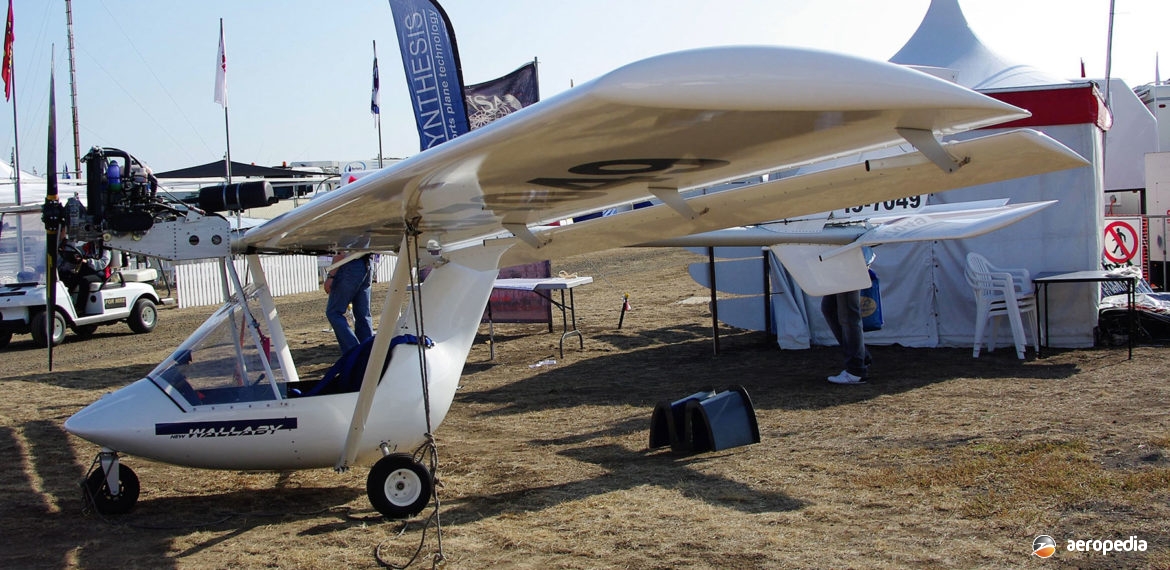Photograph:
Fly Synthesis Wallaby 19-7049 (c/n 31) at Avalon, VIC in March 2009 (David C Eyre)
Country of origin:
Italy
Description:
Two-seat light sport aircraft
Power Plant:
One 37 kw (50 hp) Rotax 503UL-2V two-cylinder, two-stroke, fan-cooled dual electronic-ignition engine
Specifications:
- Wingspan: 9.43 m (30 ft 10 in)
- Length: 5.73 m (18 ft 8 in)
- Height: 2.4 m (7 ft 9 in)
- Wing area: 12.7 m² (136.7 sq ft)
- Max speed: 144 km/h (90 mph)
- Cruising speed: 114 km/h (71 mph)
- Stalling speed: 50 km/h (31 mph)
- Max rate of climb: 150 m/min (492 ft/min)
- Take-off run: 90 m (295 ft)
- Landing run: 70 m (230 ft)
- Fuel capacity: 60 litres (13 Imp gals)
- Empty weight: 208 kg (459 lb)
- Useful load: 187 kg (614 lb)
- Loaded weight: 395 kg (871 lb)
History:
Fly Synthesis was established in 1985 when development of a series of light aircraft was commenced at Friuli in the Venezia region of north-east Italy. In 1991 the Company introduced the Storch, and later the Texan and Wallaby, the Company exporting 80 per cent of its products and setting up a network of approved dealers for the aircraft around the world.
The Wallaby was designed as a simple aircraft, affordable, economical, and utilising many high-tech materials and technology developed for the Storch and Texan. It was said that, like the Australian animal, the Wallaby, it was small and nimble, yet designed and constructed without compromising safety.
The Wallaby was a two-seat three axis basic aircraft with an open cockpit of simple configuration with a high wing, a tail at the end of a boom, and a tricycle undercarriage. It used full span ailerons and had a laminar type wing. The fuselage was made of fibreglass with a self-carrying structure for rigidity. The tail boom was of aluminium and was fixed to the fuselage by rivets.
The first of the type seen in this area was imported by the local distributor, Fly Synthesis Australia, in mid 2006. Some development of the type has occurred and the aircraft became known as the New Wallaby. 19-7049 (c/n 31) appeared on the Recreational Aviation Australia (RAA) register from December 2008 to April 2010.

